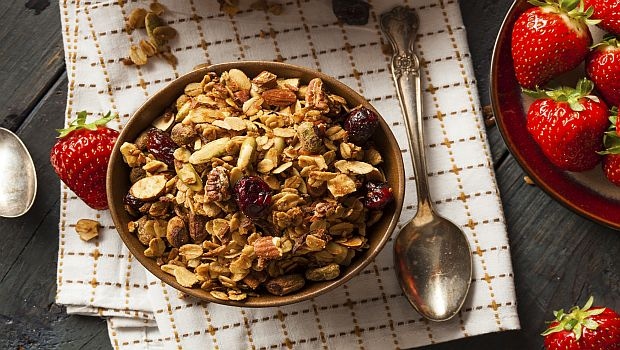Executive Summary: Protein in Cereals
May’s digital magazine, “What's in Your Cereal Bowl? The Protein Makeover," explores the shifting landscape of what it means to breakfast. As consumers become more educated about the important role protein plays in overall health and wellness, the market for protein-enhanced foods and beverages is widening beyond the sports-nutrition and weight-management categories and showing up in foods such as hot and cold cereals, and breakfast cereal bars.
May 12, 2015

Due to on-the-go lifestyles and the current push for protein-rich foods and beverages, hot and cold cereals are getting a makeover. Protein—named one of the functional food trends to shape the industry in 2015 such as the Institute of Food Technologists (IFT)—is the new breakfast black. And now, breakfast cereals come in more than just a bowl, as nutrition and cereal/granola bars have achieved broad appeal in what has become a nation of snackers.
May’s digital magazine, “What's in Your Cereal Bowl? The Protein Makeover," explores the shifting landscape of what it means to breakfast. As consumers become more educated about the important role protein plays in overall health and wellness, the market for protein-enhanced foods and beverages is widening beyond the sports-nutrition and weight-management categories and showing up in foods such as hot and cold cereals, and breakfast cereal bars.
“Cereal manufacturers are starting to look at protein fortification as a way of revitalizing the sector," said Gil Bakal, managing director, A&B Ingredients, Fairfield, New Jersey.
According to Mintel, “Several cereal manufacturers have added protein to existing products or introduced new varieties featuring high-protein claims." More than one-third of those who eat cereal (35 percent) indicate high protein is a nutritional claim they look for in cold and/or hot cereal.
And now, breakfast cereals come in more than just a bowl. According to the “Nutritional and Cereal Bars in the U.S., 4th Edition" report from Packaged Facts, Rockville, Maryland, the number of households using cereal bars increased 50 percent between 2004 and 2014. In fact, the overall market for snack bars—including both nutritional and cereal/granola bars—is projected to reach $8 billion in 2019. What’s particularly interesting about the cereal bar category is as Americans’ shift from traditional sit-down breakfasts to grab-and-go breakfasts, major players in the cereal aisle are investing more in snacks, which includes nutrition and cereal/granola bars, than in cereal. Packaged Facts said General Mills is becoming more dependent on its snack division “to save it from the lackluster performance of its Big G and other operating units." U.S. retail sales in the company’s snack division grew from 12.4 percent in 2009 to 17.2 percent in 2014. Kellogg Company’s cereal division also has dwindled in importance. CEO John Bryant said in an October 2014 analyst presentation, “Over the last decade or so, we've taken the company from being 70 percent cereal to 45 percent cereal, 45 percent snacks."
Given that bars can pack a whole lot of goodness in one fell swoop, food marketers are combining healthy halo product positionings with alternative, exotic sources of protein. According to Packaged Facts, some of those exotic sources of protein include ancient grains, meat, vegetables and cricket flour. Pea protein is a burgeoning protein source for nutritional bars. Bakal said: “While whey and soy continue to be among the most popular ingredient among cereal manufacturers, we see increased interest in pea protein powders. Because pea proteins are rich in lysine and arginine amino acids, non-dairy and lactose-free, they are attracting more and more attention, especially as manufacturers continue to remove allergens from their formulations and continue to search for perfect protein balance."
Adding protein to cereal impacts both taste and texture, and although texture is a universal consideration when developing any food or beverage, it does present a unique challenge in cereals. “Cereal formulators in particular have the added challenge of developing a product with great texture for consumption both with and without milk, since a good amount of consumers eat cereal straight out of the box or on the go," said Alison Raban, certified food scientist, BI Nutraceuticals, Long Beach, California.
As for taste, Bakal recommends combining proteins to help balance out any particular flavor impact.
The bottom line for cereal manufacturers is consumers still value breakfast as an important, if not the most important, meal of the day, but many are simply taking it with them on-the-go instead of eating it at their breakfast nook. Additionally, they want breakfast foods with high protein. When you combine these two trends, it creates space for product development and flavor innovation, and a wonderful opportunity to diversify and branch out into new categories such as the snack segment.
You May Also Like




.png?width=800&auto=webp&quality=80&disable=upscale)